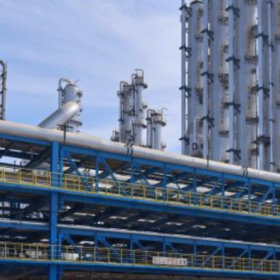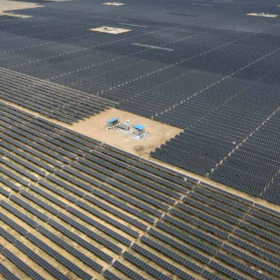pv magazine: How would you convince Delhites to switch to solar?
With an average 50 KW solar power plant, one can save up to 72 tonnes of CO2 emissions entering the atmosphere, which is equivalent to planting 1500 trees.
Solar power is not only environment-friendly but one of the very few secure investment options available in today’s declining economy to get an assured return. Installing solar not only reduces electricity bills but if you produce more electricity than your own consumption, that completely turns the table and you move from being a standard energy consumer to an energy producer.
On top of all these financial and economical benefits, solar gives consumers an opportunity to contribute towards national development, feeling pride as they do their bit to ensure India meets its global and internal clean energy commitments, helping cities and states meet their climate change, air pollution and energy security targets.
Currently, Delhites are witnessing the worst environmental disaster and air pollution of our time. The obvious solution lies in joint city and regional actions. Air pollution is not only a winter problem and not solely caused by crop residue burning but by increasing electricity demand, and the burning of coal in neighboring states’ thermal power plants.
Citizens definitely need to accelerate their demands and hold governments accountable for their actions on a number of air pollution sources. We need their solutions, and a quicker response, by accelerating solar rooftop adoption to leave a clean and breathable environment for future generations.
We must all join hands to stop Delhi from becoming a city of masks and work to create a solar city that guides other cities and nations towards a sustainable and climate resilient future for all.
pv magazine: How much can Delhi contribute to India’s rooftop solar target?
Indian residential rooftops have vast untapped potential for solar power. With a huge overall target to reach by year 2022—100 GW of solar generation—residential rooftop solar power installation can change the course of progress. Most of the solar installation so far has focused on utility-size solar plants and growth in residential is very low.
So far Delhi has installed around 146 MW of rooftop solar, but here again most of the installations are on government and institutional buildings and very few at individual household or society level.
As per Delhi Solar Energy Policy (2016): “Delhi established solar generation targets of 1 GW (1000 MW) by 2020 (4.2% of energy consumed) and 2 GW (2000 MW) by 2025 (6.6% of energy consumed).”
These set targets are conservative and do not make an ambitious start for a city like Delhi, which is blessed with almost 300 sunny days and almost 31 sq. km potential rooftop space available.
Delhi has a solar energy potential of 2500 MWp (annual electricity generation of approx. 3,500 million KWh). Of this potential, 26% is in the government/public sector, 25% in commercial/ industrial sector, and 49% in domestic sector.”
pv magazine: What are the obstacles to realizing this solar growth?
Solar adoption is not picking up despite many financial, environmental and government incentives—a generation-based incentive of INR 2.00 per unit (kWh), group net metering, virtual net metering (for those who don’t own a roof but are interested in getting benefits of solar), income tax benefits along with central subsidies, and a lower cost of solar energy generation than conventional grid electricity.
To encourage rooftop solar adoption, we need to tackle certain myths like solar electricity is not real electricity, it’s expensive, and it can’t run fans or big appliances like TVs and refrigerators, even as we accelerate efforts in technological, policy and financial models.
Lack of communication with end users, lack of consumer awareness about the program, policies and benefits of current solar initiatives, and lack of trust between solar installers and potential consumers are all reasons for slow growth in rooftop solar.
High upfront costs and limited loan availability is yet another challenge, but assured high returns in solar, the high risk of investing in the share market in the current declining economy, and low interest rates on deposits with banks give today’s investors a good option in solar that has assured returns on investment; we don’t see the sun stop rising each morning, lighting and powering the earth every day.
pv magazine: What action plan do you propose?
As of March 2019, India had installed cumulative 4.37 GW of rooftop solar capacity. This has to grow ten-fold so as to achieve the year 2022 target of 40 GW. For this, different states and union territories must gear up.
Delhi has installed only 146 MW of rooftop solar capacity, as against the 2019 target of 606 MW set under the Delhi Solar Policy. This demonstrates that both state- and national-level actions need to be stepped up without losing any time.
There is an urgent need to design programs and promote solar adoption along the lines of Swachh Bharat Mission at national level, and the mohalla clinics initiative by Delhi State Government. Without getting people excited and enrolled for purchasing solar, it will be impossible to achieve the desired impact of these solar schemes, and the ambitious 450 GW of renewable energy target announced by Prime Minister Narendra Modi at the United Nations Climate Action Summit 2019.
Strong international, national and state level solar energy procurement goals have and will continue to play a very important and crucial role in pushing solar growth, but rooftop solar growth will hinge on how well we connect and communicate policy, economic and environmental benefits to end users and electricity consumers.
This content is protected by copyright and may not be reused. If you want to cooperate with us and would like to reuse some of our content, please contact: editors@pv-magazine.com.









Individual investment in roof solar may be of much attraction to the owners due to policy of power utilities. Let the investors on lease basis install the roof type PV solar installation in the form of Community Project and meet the power requirement of individual on competitive unit rate and balance power is sold to the utility. After certain time say 5 yrs, the individual be given the option to own the installation. Alternatively, solar agency put their own roof PV equipment and levy prepaid monthly charges based on average monthly consumption and the owner be given the option to purchase installation at book value. This way a trust is created into individual house owner the worthiness of the system as consumer / prosumer.
Hi All,
Even I agree with you Uma, if government makes rooftop system approval simpler and DESCOMS(Electric Distribution companies) give net metered money regularly then without fail we get 200% success.
My request would be please write article on “issues faced in approval process and how much delay descoms makes to give money” then our government might take some actions.
People like us will ready to invest eagerly,
for ex., we invested 100000 Rs. and we started getting benefits 1000 or 2000Rs. every month for 20 or 30 years then why not
Thanks and Regards,
Ajay K N
Thanks for your feedback dear Mr Ajay!! While we work on this, we also invite articles on this topic from subject experts within the rooftop solar fraternity. Best, Uma Gupta
It is kind of difficult to make Delhi a solar city. The pollution level of Delhi is increasing at alarming levels and we can expect that government should make mandatory decision to distribute resources from solar plants. Visit us @ http://www.rockwoodenergysearch.com/
Hello, Thanks for posting this blog!!!
solar energy is best technique for reducing energy and saving money.if you want to get best solar system then visit solar installation company in india by vincent solar energy.